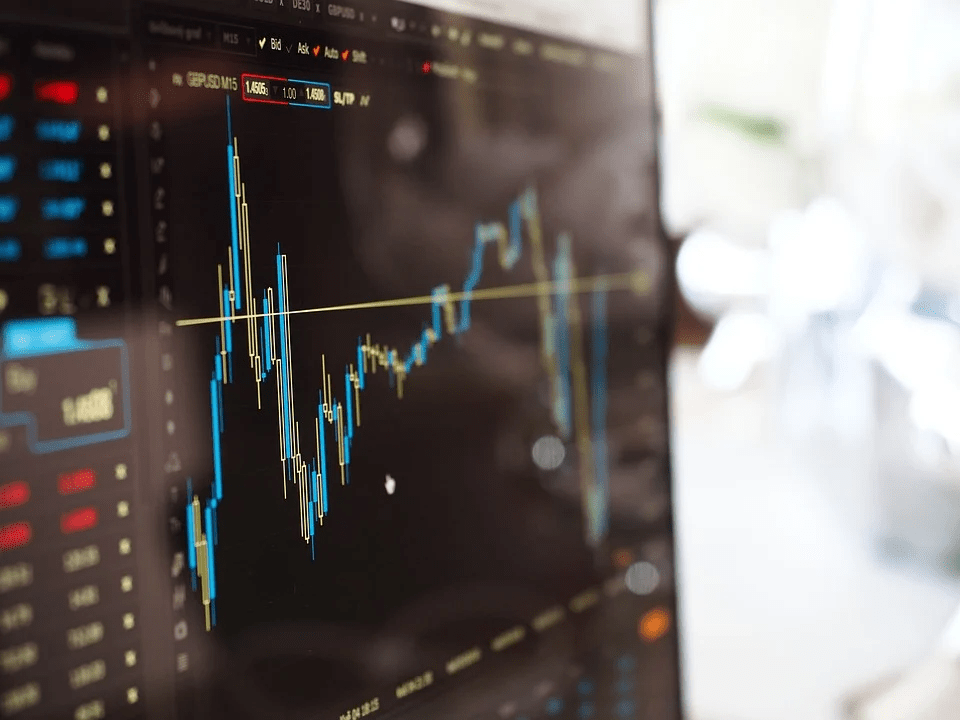Futures Traders rely on good data to make the right calls. Big Data companies like Gro Intelligence could help traders make better decisions about agricultural futures.

Image via Pixabay
Knowledge is power and nobody understands this like futures traders. In order to predict the market, you need to have access to the right data. This is especially challenging in a sector like agriculture where there are a huge number of variables that could cause sudden price shifts.
Big Data solutions, like Gro Intelligence, could provide the tools that futures traders need to make the most of their contracts.
How Do Futures Contracts Work Anyway?
Futures contracts are an important aspect of any industry relying on commodities. They essentially amount to an agreement to purchase or sell a certain amount of a commodity for a specific price at a date in the future.
There are two types of futures traders: hedgers and speculators.
Free Reports:
 Sign Up for Our Stock Market Newsletter – Get updated on News, Charts & Rankings of Public Companies when you join our Stocks Newsletter
Sign Up for Our Stock Market Newsletter – Get updated on News, Charts & Rankings of Public Companies when you join our Stocks Newsletter
 Get our Weekly Commitment of Traders Reports - See where the biggest traders (Hedge Funds and Commercial Hedgers) are positioned in the futures markets on a weekly basis.
Get our Weekly Commitment of Traders Reports - See where the biggest traders (Hedge Funds and Commercial Hedgers) are positioned in the futures markets on a weekly basis.
A hedger is typically a company looking to protect itself. To understand this, imagine that a chocolate producer needs to secure its supply of sugar:
- The producer wants to lock-in a purchase at a specified price, to protect itself from sudden price rises and be sure about its margins.
- A sugar distributor sells a contract at this price in order to ensure that it has a steady market for its product and to protect itself against a sudden price contraction.
- Both sides agree to a delivery time, a product amount, and a price. For example: in 60 days, 100 tonnes of sugar will be sold at $355 per tonnes by the distributor to the producer.
Futures are important in a wide variety of commodity industries because they help to hedge against instability. Without them, producers and distributors are vulnerable to sudden market shifts. The disadvantage of futures is that a bad decision can mean you overpay or undersell with no way to get out of the contract.
On the other hand, speculators have no intention of redeeming the commodity and are simply seeking to make money from the price changes in the contract itself. If the price rises, the contract becomes more valuable and they can sell it for more money.
Speculators are also able to short-sell their contracts or borrow against the commodity, in the hopes that it will decrease in value. This kind of margin trading is particularly risky as a speculator may be leveraging a significant amount of debt. A bad call could cost them dearly.
Leveraging Big Data to Make Better Trading Decisions
This is where Big Data firms like Gro Intelligence come into play. They collate millions of data-points about everything from the weather to global market demand. The company then uses this data to build in-depth models that provide deep insights into specific agricultural trends.
This helps turn data, which is worthless by itself, into actionable intelligence. Gro intelligence produces a variety of different models and frameworks but they can be broadly broken down into six categories:
- Price: To help traders decide where crops make the most money
- Demand: understand where demand centers are currently focused and where they will be focused in the future
- Supply: predict current and future supply centers
- Pests and disease: see how a region or crop is likely to be adversely impacted by pests and disease
- Weather and Climate: understand and predict short- and long-term impacts of the environment on commodity production
- Crop Masks: assist with crop yield forecasting for important crop types and regions.
All of these models are useful to savvy traders who can use them to better understand the likely future prices of a commodity and gain an edge on the market. To understand how that might work let’s take a look at two real-world case studies.
Predicting The Calendar Spread — Soybeans
One of the more important aspects of futures contracts is the calendar spread. This involves entering a long and short position on the same underlying asset at the same strike price (the price a derivative is bought or sold at) but in different months. The key to making these work is understanding how the market will react over a longer period of time.
Gro Intelligence used data analytics to predict the spread of soybean futures between July and November. The analysis discovered that the prices in July are driven by the fortunes of the Brazilian crop while in November the main price driver is the US crop.
The company constructed three independent variables: the US soybean ending stocks-to-use ratio, the Brazil ending stocks-to-use ratio, and the Brazilian soybean yield as a deviation from the overall trend. The study showed that in a normal weather scenario, the size of Brazil’s soybean crop has a direct impact on global trade flows, and affects the forecast of supply and demand in the US.
In other words, if Brazil has a good year, the price predictions in the US. are likely to rise. The three variables have an R-Squared of 0.43, or are responsible for 43% of the total price variation of soybeans.
Constructing a Price Index — Grain
A price index is an important tool for understanding grain futures. Gro Intelligence collates data from the Data Transition Network (DTN) in order to create a price index. More interestingly the company has made it possible to take data from over 4,000 grain elevators into a single daily price. This can allow a trader to track localized supply and demand conditions in real-time.
Financial traders can build models designed to predict trends in future prices. For example, if you can see a significant decrease in the price of grain in a country’s biggest producing areas just ahead of a harvest, it might be a warning that there will be a bumper crop that year.
Data Is Key to Making the Right Calls
In an industry where an error can literally bankrupt you, as sugar trading almost did to Milton Hershey, the right data is key. By leveraging Big Data solutions like Gro Intelligence, futures traders are able to gain an edge and make more logical decisions.
In the long term, traders using these solutions will have a significant advantage over less forward-thinking competitors.
By Taylor Wilman

- 3 Signs of Developing U.S. Economic Slowdown Apr 19, 2024
- Israel has retaliated against Iran. Investors run to safe assets Apr 19, 2024
- Gold hits record high amid growing geopolitical tensions Apr 19, 2024
- The US natural gas prices fell to a 2-month low. A drop in the technology sector on Wednesday had a negative impact on the broad market Apr 18, 2024
- Target Thursdays: Cocoa, Bitcoin and USDCHF hit targets! Apr 18, 2024
- British Pound shows signs of recovery amid favourable inflation data Apr 18, 2024
- Indices decline amid hawkish comments from the Fed. Investors are waiting for Israel’s answer Apr 17, 2024
- EURGBP: Slams into support on hot UK inflation Apr 17, 2024
- Brent crude prices dip amid concerns over global demand Apr 17, 2024
- Stock indices sell-off amid rising geopolitical tensions in the Middle East. China’s GDP grew the most in a year Apr 16, 2024
